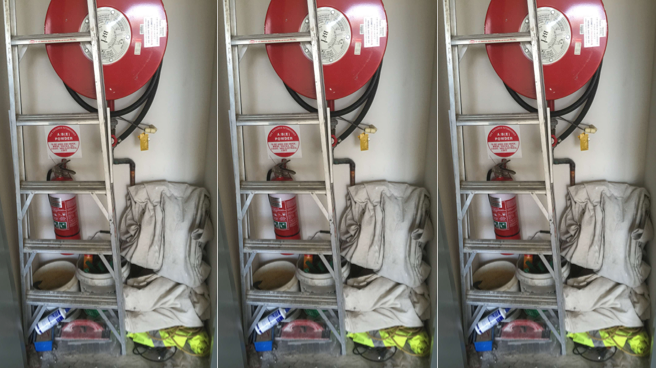
14 Apr STORING ITEMS IN SYDNEY FIRE CUPBOARDS
Sydney Extinguishers is forever seeing when persons are storing or placing items in fire cupboards. This blocks access to the fire extinguishers, fire hose reels & fire hydrants. The problem with blocking the access into a fire cupboard is that it slows you down when you go to grab out fire equipment in Sydney when needed! Every second counts! Sydney Extinguishers hopes that the simple guide to house keeping your Sydney cupboards helps you out! Remember a path of one (1) metre should be kept at all times!
General Housekeeping for Fire Safety in Sydney
| Accumulation of combustible materials | The accumulation of combustible materials (such as cardboard boxes, magazine/journals and paper products) is prohibited. Combustible material must never be stored any closer than 36″ from a heating appliance or electrical light. Items no longer in use should be properly disposed to avoid stacking and accumulation on counters, top of cabinets, floors and desks. |
| Scrap, waste materials, dust and trash | When these items are allowed to accumulate, the risk of fire is increased. Under the right conditions, the buildup of dust from wood, plastic or certain metal operations can lead to a fire or explosion. |
| Plastic and foam items | The storage and use of foam or plastic cups, utensils, etc. close to heat sources should not be allowed. These materials are combustibles and can quickly start a fire (e.g. Foam cups left next to a coffee maker). Plastic foam also burns rapidly and gives off dense toxic black smoke. |
| Material Storage | Ceiling Clearance – 24 inches in non-sprinkle red buildings is strictly required for ceiling clearance. This will allow manual hose streams of water to effectively reach the top of a burning piles and any adjunct storage.
Ceiling clearances of 18 inches is required in splintered areas to allow the even distribution of water to the storage. Means of Egress – Combustible materials cannot be stored in corridors or egress paths that could jeopardize the safety of occupants leaving the building. Equipment Rooms – Combustible materials cannot be stored in boiler rooms, mechanical rooms or electrical closet and equipment rooms. Fueled Equipment – Motorcycles, mopeds, lawn-care equipment and portable cooking equipment cannot be stored inside buildings. The exception to these is those spaces that are designed and rated for the specific fueled equipment, such as a garage (contact EHSS Fire Safety Engineer to affirm the design specifications for a space in question). Storage under canopies and roofs that project from the building – This would include loading docks, entrance canopies, etc. Storage is permitted if an automatic sprinkler system is present. Storage Heights – Piled storage in the open cannot exceed 20 feet. This will reduce the size of a potential fire and prevent tip-over potential. |
| Decorations | Decorations, signs and other items should not be hung on or near the sprinkler head. |
| Obstructing Portable Fire Extinguishers | Access to portable fire extinguishers should not be obstructed by other equipment, furniture or miscellaneous storage. Extinguishers must be clearly visible with notification signs displayed. |
| Spills on Floor | Any condition causing leaks or drips of flammable or combustible liquids should be corrected. The area of the spill should be cleaned immediately (contact EHSS for additional clean-up requirements). |
| Hoarding | Hoarding increases the risk of fire and possible structural damage due to increased weight loading on floors. Maintain premises free of unneeded and unnecessary combustible materials. Surplus or properly discard unused items being stockpiled or hoarded. Hoarding is a serious fire code violation and will be treated as such. |
| Clear Passage | Keep passageways clear of obstacles, including furniture, trash, misc. storage and equipment. |
| Materials that spontaneously combust | Oily rags or other materials soaked in oil can start a fire by themselves if placed in areas where the air does not circulate. Contact EHSS for additional requirements for Oily Rags. |
